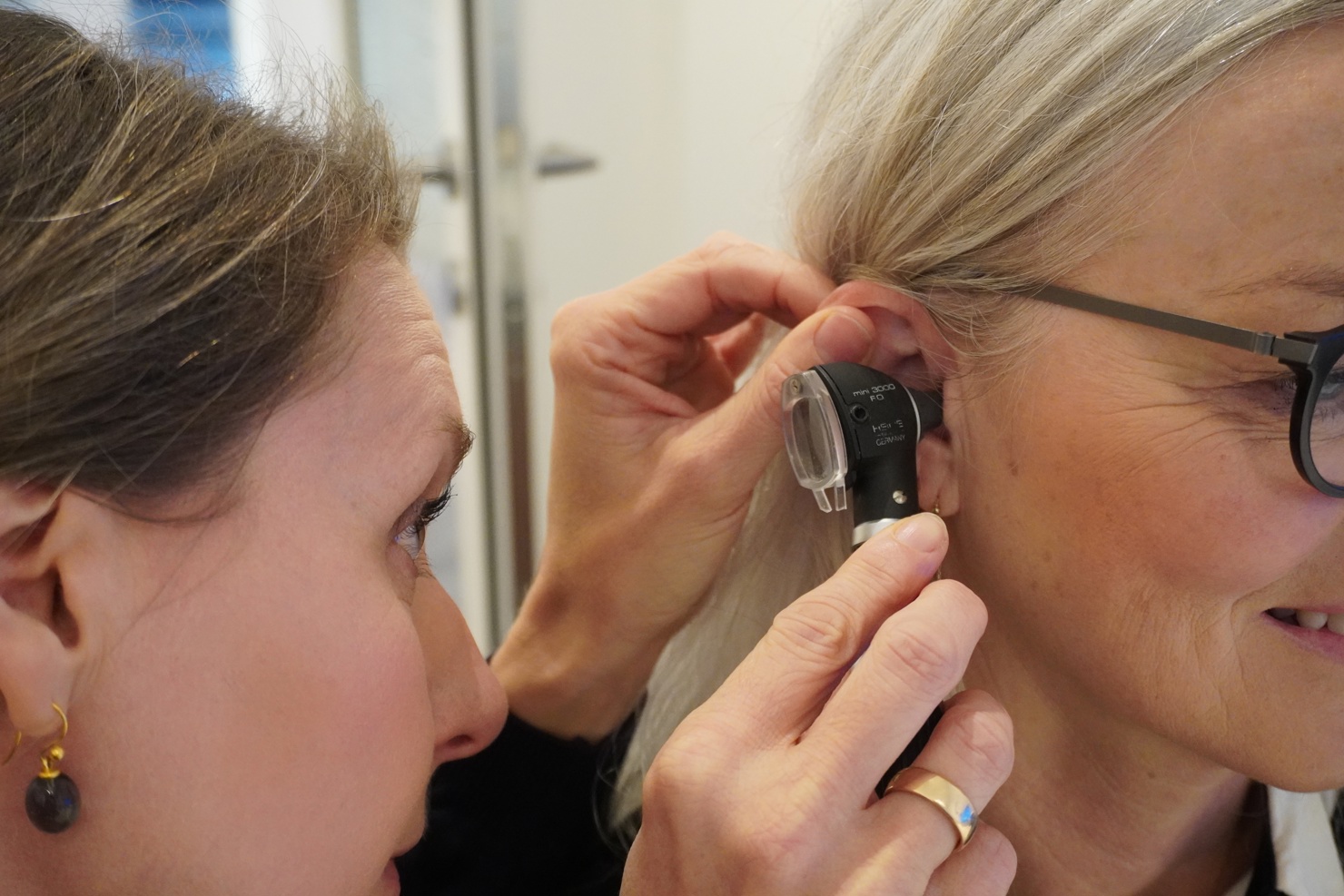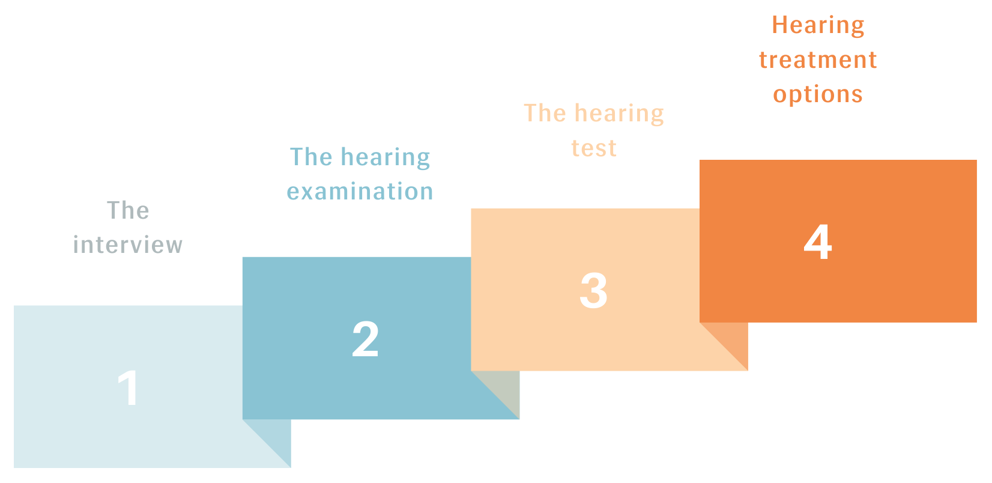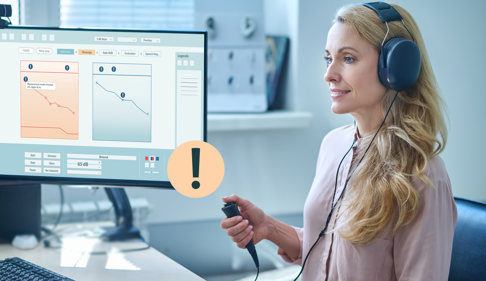Step 1: The Interview
The purpose of an introductory hearing health interview is to determine how the client is experiencing their hearing loss, and to help reveal its cause. This step typically includes talking about the client’s medical history and what specific hearing problems the client has in which situations.
Questions to assess the hearing loss and the implications this has on the patient's daily life:
- Does anyone in your family have a confirmed hearing loss?
- Have you had any illnesses or injuries that might have affected your hearing?
- Have you taken any medications that might have affected your hearing?
- Have you been exposed to loud noises in your job or leisure activities?
- In what types of situations do you find you are experiencing the greatest difficulty with your hearing
- What do you do when you cannot hear? - how does that make you feel?











